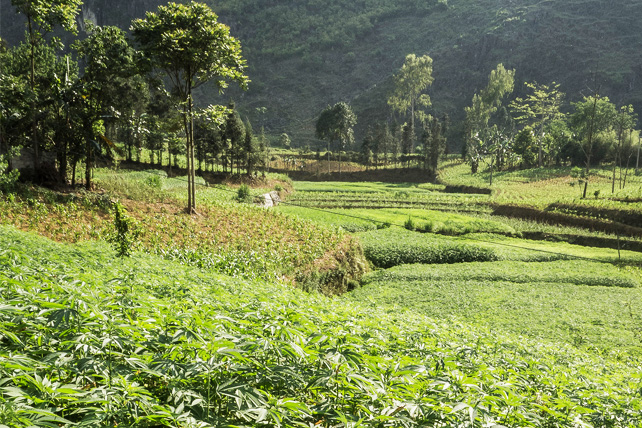The criminalisation of drug production and consumption is driving widespread environmental damage and impeding efforts to stop climate change, a new report from The International Coalition on Drug Policy Reform & Environmental Justice warned today, in advance of the International Drug Policy Reform Conference and less than two months before the UN Climate Change Conference in Dubai.
The report unveils how prohibitive drug policies – which drive drug cultivation into remote and incredibly fragile ecosystems to evade law enforcement detection – are undermining environmental progress and governance in the world’s tropical forest frontiers.
The International Coalition on Drug Policy Reform & Environmental Justice is a coalition of scientists, activists, academics and artists. Their aim is to raise awareness of how current drug policies undermine environmental justice, and propose drug policies that centre ecological harm reduction and the responsible legal regulation of the drugs trade.
How drug prohibition harms the environment
From Southeast Asia, to West Africa and South America, the planet’s rainforest zones are equated with the world’s major drug trafficking routes. Illegal logging, mining and drug trafficking often go hand-in-hand as common activities within this “shadow economy”. And while the connection between these illicit activities is increasingly documented, environmental activists must be made aware that reforming drug policies should be part of their plight.
Drug production and trafficking is pushed into environmental frontiers
Drug activities are typically pushed into remote and fragile ecosystems to avoid detection in production and trafficking. And while some borderlands are cleared for drug production, it is the fact that they are pushed towards environmentally protected areas that causes major damage. When areas of forest are cleared for coca bush plantations, subsequent eradication by law enforcement means that large patches of forestland have gone missing, and are never replanted. These open territories are occupied by cattle grazers, transferring land into private companies and preventing the regeneration of the land.
The more that drug producers and traffickers are pursued, the bigger the demand for more remote and isolated trafficking routes and cultivation locations, creating a vicious spiral of environmental degradation.
Drug profits fund environmentally harmful activities
Criminal activities are less risky when they are done in land controlled by the criminal enterprise, or under their influence. Purchasing rural land in many countries with key biodiverse regions is often easily done with cash and without formal deeds. This is a common practice across Central and South America, where narco-traffickers use violence, threats and cash to control land that is often protected by conservation plans.
This has been primarily documented in South America, where there is ample evidence of gold mining, illegal logging and land seizing happening by criminal organisations. The report highlights how in Peru, the same routes that are used to traffic mined gold are used to traffic drugs. In Brazil, there is a longstanding history of drug traffickers creating clandestine airstrips in the Amazon to move illegally mined gold, drugs and weapons across borders.

Prohibition destabilises societies and obstructs climate mitigation efforts
Civil society organisations and activists are often impeded – and even murdered – to ensure they do not cover these developments, preventing any scrutiny from external actors. The report highlights how efforts to track the money used to assassinate environmental defenders is often challenged by corruption in police forces and the judicial system, which is accelerated by the massive profits from illegal drug trafficking.
The violent and public murder of Ecuadorian presidential candidate Eduardo Villavicencio, who was an outspoken opponent of organised crime, along with the deaths of environmental reporters Dom Phillips and Bruno Pereira in Brazil are stark reminders of the brutal power that organised crime hold to silence challenges to their rule. Fighting the drug trade not only diverts resources that could be used to prevent corruption and protect biodiversity, they increase the violence around those that are willing to report on and defend the environment.
“Prohibition has created an unregulated and immensely powerful shadow economy, which is a major obstacle to progressive reform in many countries with hugely valuable and threatened ecosystems. Environmental organisations didn’t used to talk about diet in their campaigns, but now it’s widely accepted that part of the solution to climate change lies in consumers in rich countries eating less meat. In time, we hope the same shift will happen for drug policy. When you look, the links are everywhere,” said Clemmie James, Senior Policy and Campaigns Officer for Health Poverty Action.
From mobilising youth actors to environmental activists, we need to connect wider causes to drug policy reform to highlight how one cause is impacted by the other.
“We must build public policies in Brazil by integrating the direct relationship between drug trafficking and environmental crimes. In Brazil we know that they are inextricably linked and the world will not stop deforestation and climate change without acknowledging these links and building them into policy making for the future,” said Daniela Dias, Project Coordinator for SOS Amazonia and member of the coalition.
The report can be found here.


